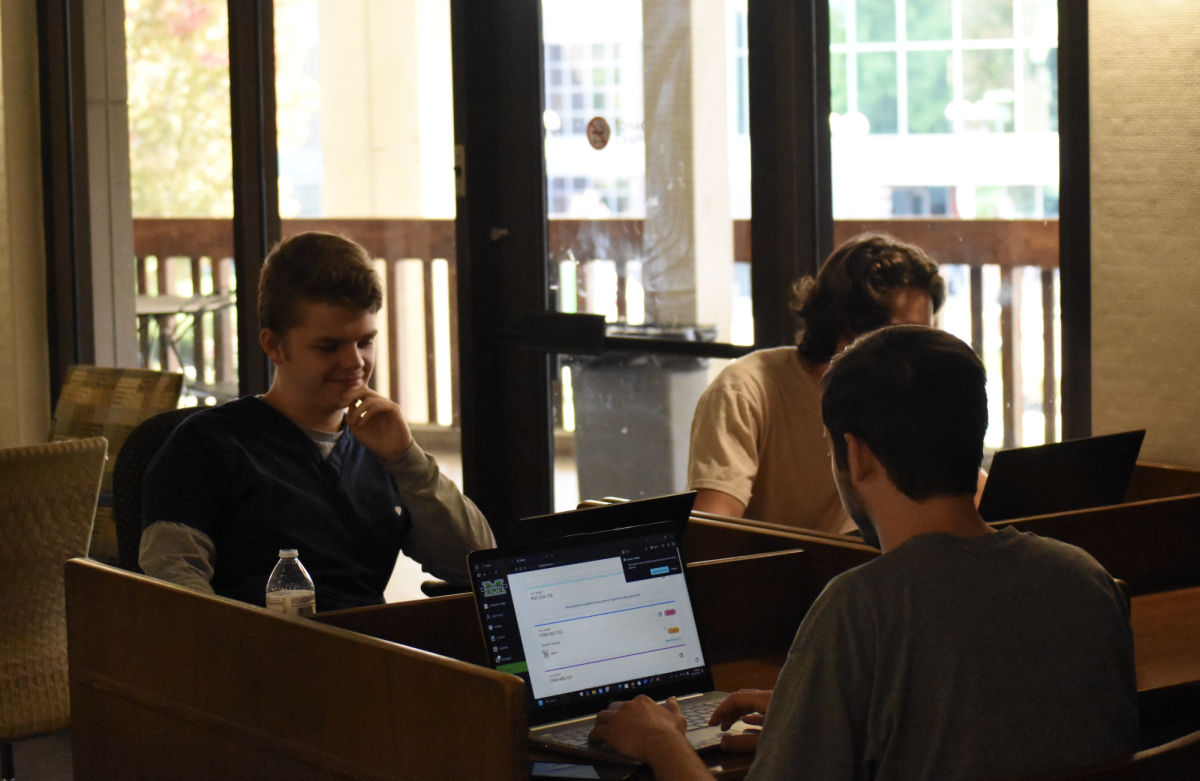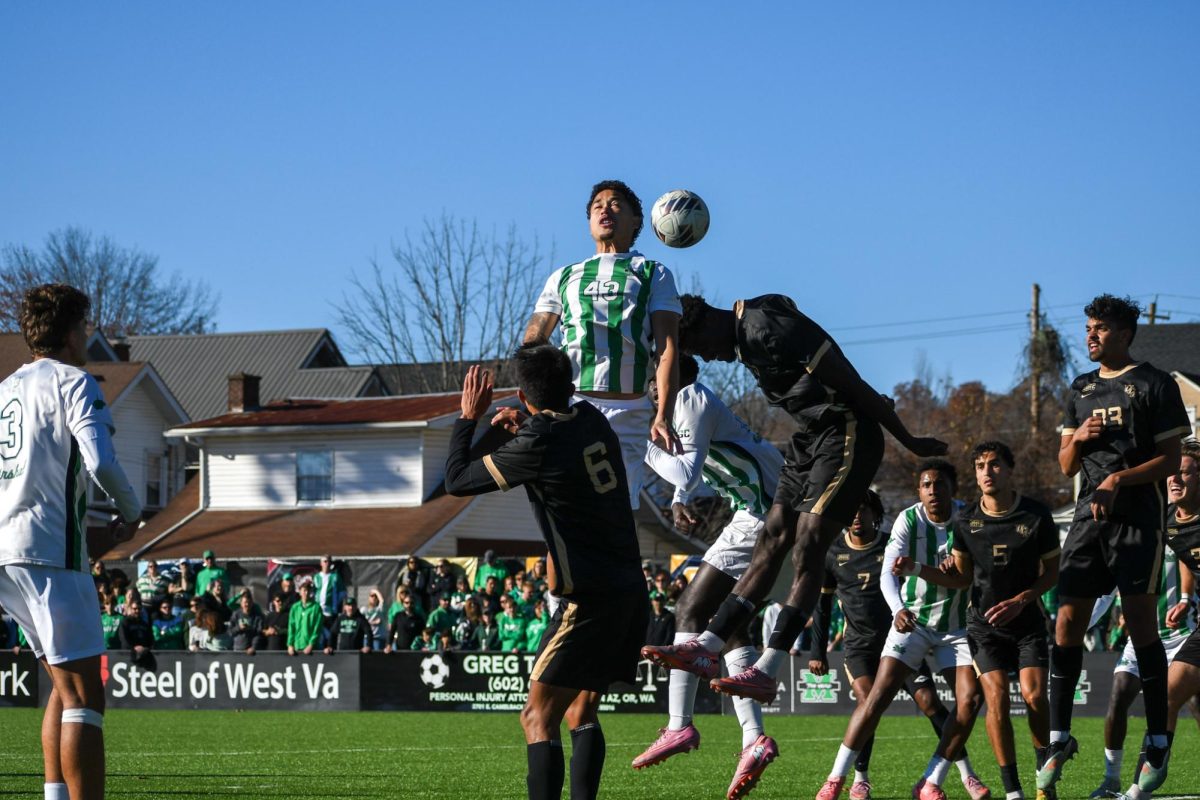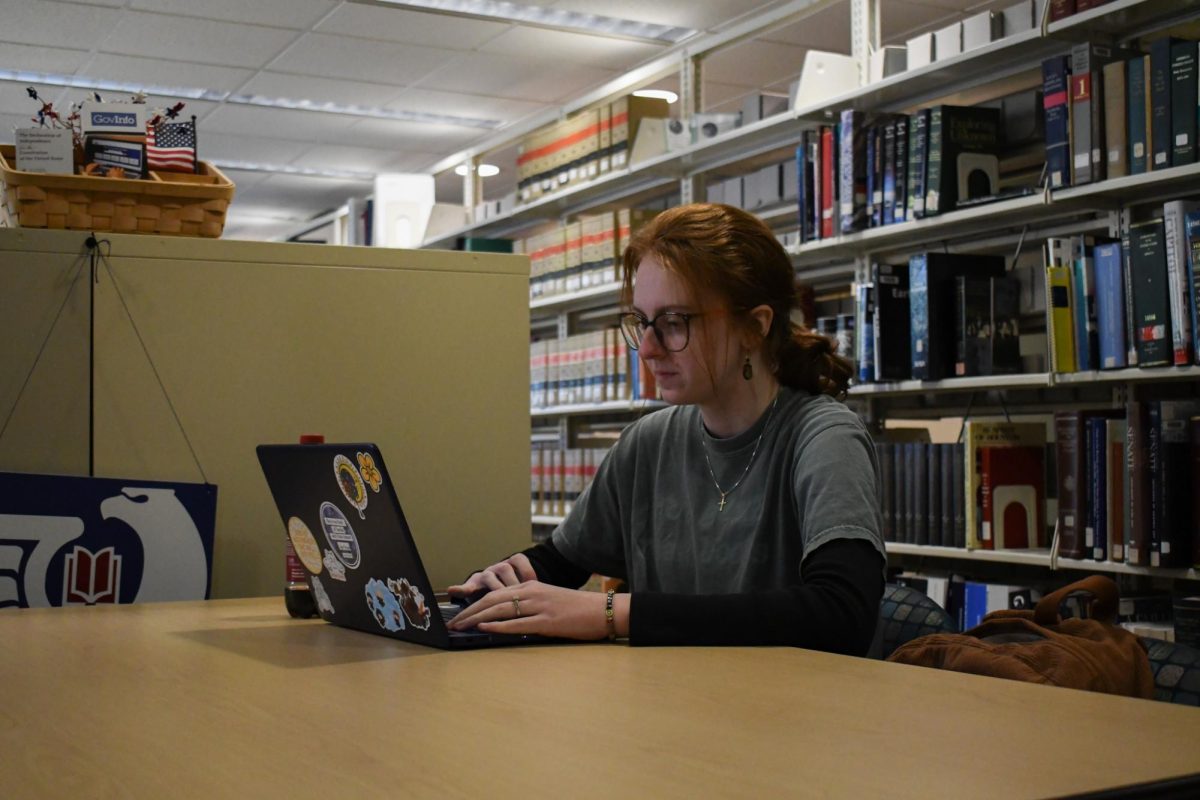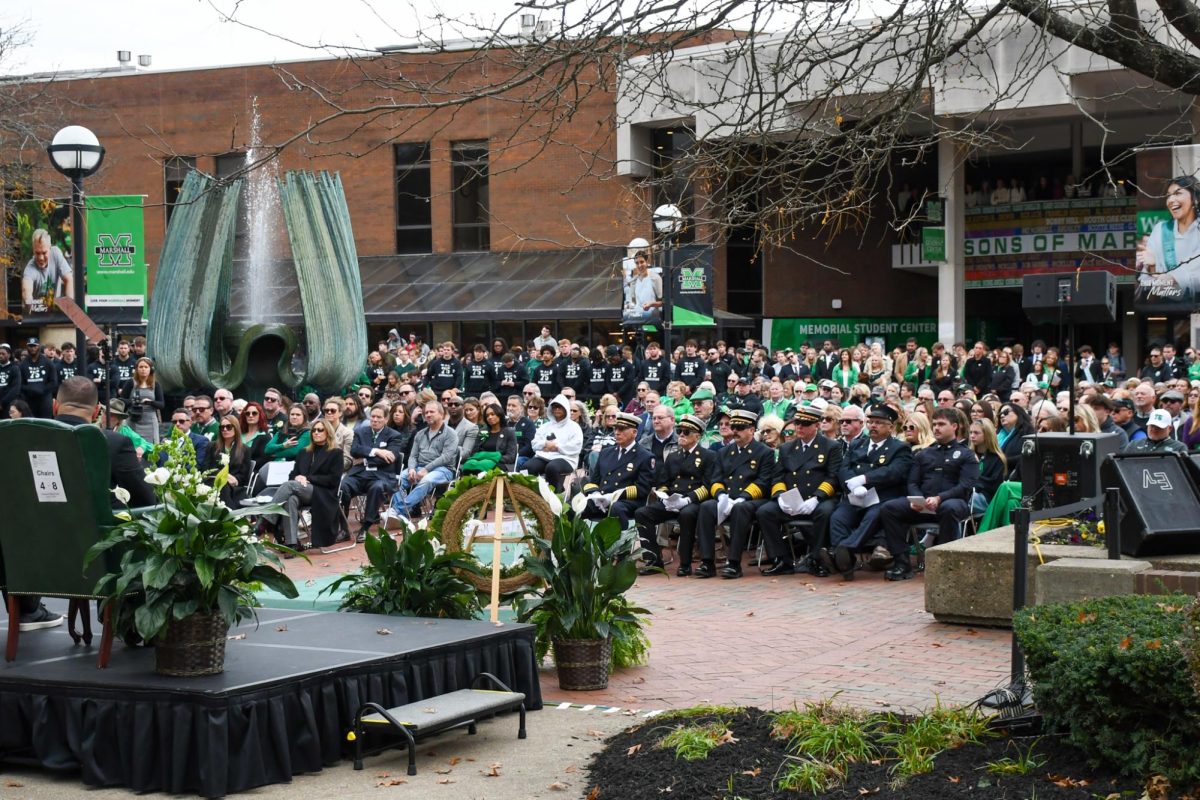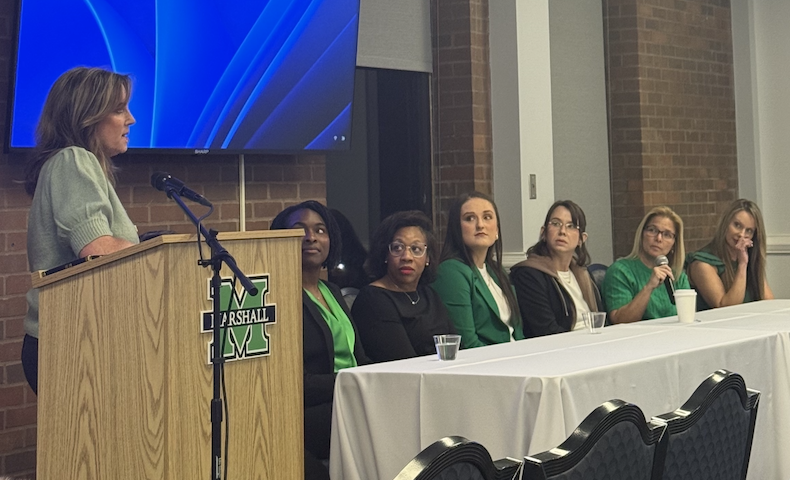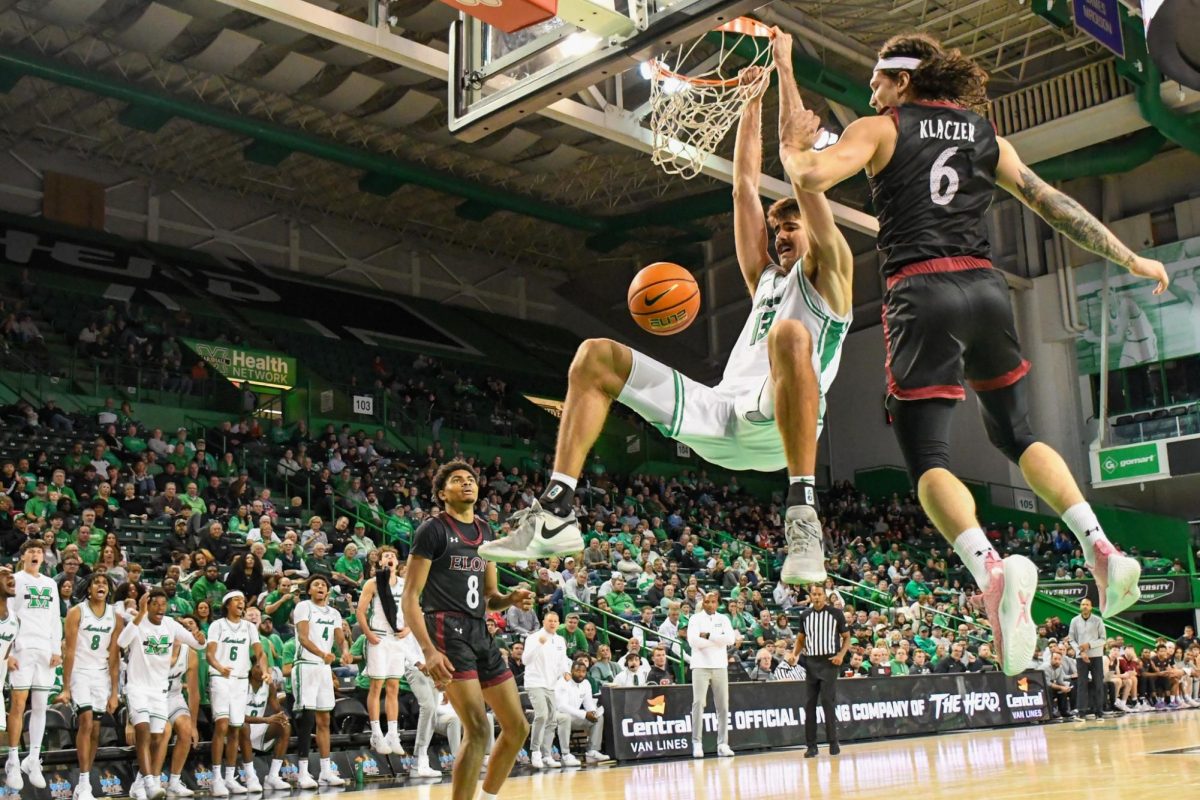Protestors Spark Change in Marshall’s Title IX Program
Demonstrators protest Friday, Oct. 18 after a USA Today article detailed Marshall’s failings within Title IX.
November 19, 2022
After a student-led protest on Friday morning, Nov. 18, Marshall University plans to work with the student body on restructuring the Title IX system to put students first.
The protest came three days after USA Today published an article describing the experience of two Marshall students going through the Title IX process at the university. This article was a part of USA Today’s series highlighting the failings of collegiate Title IX programs.
The article highlighted Joseph “Chase” Hardin, who sexually assaulted fellow Marshall student Alicia Gonzales in 2016. He was allowed to remain on campus through appeals despite Marshall officials originally recommending his expulsion. Hardin went on to sexually assault a second student, Ripley Haney, in 2018. He was convicted of two counts of second-degree sexual assault in 2020.
Marshall “followed the letter of the law but missed the spirit” of Title IX, USA Today’s article wrote. President Brad D. Smith addressed this critique in an email to the university on Thursday, Nov 17.
“Since the time of the 2018 case, Marshall took multiple steps to strengthen its policies and procedures,” Smith wrote. “A task force was convened, the Board of Governors policy on Discrimination, Harassment, Sexual Harassment, Sexual & Domestic Misconduct, Stalking, and Retaliation was updated, and new Administrative Procedures were developed to better address and adjudicate these issues.”’
“I love Marshall University,” Bex Law, a second-year journalism student who organized the protest, said, “but part of loving something is accountability.”
Law’s intention in organizing the protest was to advocate for reforming Marshall’s Title IX Office by bringing attention to the experiences of victims of rape, sexual assault and stalking on Marshall’s campus. Students, staff and community members arrived at 11 a.m. outside of Old Main to show their support.
Before the protest’s official step off, Smith joined the event along with Ginny Painter, chief of staff, and Marcie Simms, vice-president of student affairs.
Smith invited the protestors into a group meeting with him and other university officials to discuss their concerns, questions and the next steps that Marshall will take to improve its Title IX program.
“We need to have trust that you are in a safe environment and, should you ever feel anything less than safe, that you should understand the process,” Smith said during the meeting. “You should know that people are here to advocate on your behalf and that you are protected until you feel comfortable. And so, if that does not exist—if that has not existed—you hear from me directly that I apologize on behalf of our university.”
Law alongside the other protestors advocated for clearer Title IX processes and changes including transparent communication across all university platforms, priority scheduled counseling for victims and stricter no-contact sanctions against alleged abusers.
“I have friends who are in classes with people who assaulted them or who assaulted their close friends or who are known to stalk people,” Law said in response to Smith. “The energy around the situation is, ‘Well, we’re a small school. It’s unavoidable.’ That simply isn’t true. It is avoidable. Regardless of the size of our campus, no one should be forced into these situations.”
After more discussion, Law informed Smith that the protest was the first of many plans the group had to spark conversation about safety on campus. Smith commended her efforts by thanking Law and the protestors for their actions.
“I think it’s important for us to all make sure our voices are heard and to address issues that are important to everyone on this campus, and that is what you are doing,” Smith said.
After the meeting, the protestors prepared their signs and marched through the snow from Old Main to the Memorial Student Center. Rallying around the fountain, survivors and supporters began sharing their stories of how Marshall’s Title IX Office left them feeling scared, angered and upset.
“It takes time to build up trust,” Sam Green, a student protestor, said. “I think there is a lot that needs to be changed and I know we are going to continue our conversations with President Smith until that trust is rebuilt.”
In the hours after the protest, Smith addressed the university in a second email with his reflections. Top priorities for the university are restructuring Title IX’s website and gathering input via a student-led task force, according to Smith.
“I have also come to believe we need a task force of students to review the most recent changes to our Title IX policies and to explore additional ways of informing, educating, and protecting students on campus,” Smith wrote. “This will require input from many of you. I will ask the leaders of the group I met with today to identify 4-5 students who could serve on the task force. We will also engage students from other groups across our campuses to ensure all voices are heard.”
Concluding his email, Smith acknowledged the difficulty of the situation but wrote, “I look forward to these discussions.”




